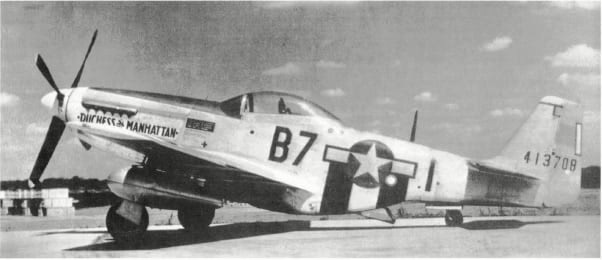North American P-51D Mustang IV historical facts
A total of 6,502 North American P-51D Mustang IV aircraft were built at North American’s plant in California, while an additional 1,600 were produced in Dallas, Texas. These Dallas-built aircraft were originally to be called P-51Es, but the designation was changed to P-51D before production began. This was because the USAAF opted simply to rely on North American’s NA suffix for the aircraft produced in California and NT for identical examples built in Texas. This changes eliminated the use of different model letters for the same variant just because some were from one production line and others were produced elsewhere. This had previously been the case for the identical P-51B and P-51C.
A version of the P-51D specific to the Dallas production line was also produced. Known as the P-51K, it was similar to the P-51D except for its propeller. The P-51D had a Hamilton Standard Four-blade unit similar to that of the P-51 B/C, usually with blade cuffs. However, fears about the availability of this unit (Hamilton Standard propeller were almost universal on US combat aircraft in World War Two, alongside Curtiss Electric units) led to the adoption of a four-blade, uncuffed and slightly lighter Aeroproducts propeller of 11 ft (3,35m) diameter as an alternative for the P-51D. Dallas-built production Mustangs with this propeller were designated P-51K.
The combined total of 8,102 P-51Ds exceeded by a wide margin the production numbers for any other Mustang variant. Of the 1,600 P-51Ds built in Texas, 136 were fitted with cameras and redesigned as F-6D photo reconnaissance versions. Initially ten P-51D-25-NTs were built as two seat trainers, but fifteen more were modified in 1951. P-51-25-NT, 44-84900, was converted for carrier trials and redesignated ETF-51D-25-NT.
Of all North American P-51Ds built in the United States, 280 P-51Ds went to the Royal Air Force where they were called Mustang IV.
The major improvements that the North American P-51D Mustang IV offered over previous Mustangs were the improved visibility due to the bubble canopy and the greater firepower of six .50-caliber machine guns. Only four guns had been installed in the P-51A, P-51B, and P-51C.
Other less noticeable changes included a redesigned wing with a large fillet at the leading edge root. The navigation lights on the wings were changed to a single light on each wing tip. Early versions had a light on the top and the bottom of each wing near the tip. The landing/taxi lights, which had always been mounted in the leading edge of the wing on previous variants, were now located inside the wheel wells. They hung down from the back of the wells when the gear retracted.
The design of the main gear wells and inner doors changed slightly from the earlier Mustangs, and there were other minor modifications as well. But otherwise the basic and proven design of the fighter remained the same as it had been on the P-51B and P-51C.
Virtually all those who flew the P-51D in combat found it superb. It combined range, speed and manoeuvrability in an excellent airframe that was easily the match of any piston-engined fighter it came across. Moreover, if speed could be built up in a dive, or it adversary could be lured into a turning dogfight, the North American P-51 Mustang could also battle it out with a new menace in the skies over Europe, the early German jets. Truly, the Mustang had grown into a magnificent fighting machine.
Although the subsequent P-51H offered increased performance, it was the North American P-51D Mustang IV that became the best known and most popular of all Mustang variants. It was exported to almost two dozen foreign nations, and of all versions that had served in the World War Two, it was the F-51D that saw combat again in Korea. An F-51D also became the last propeller-driven fighter to see service with the Air National Guard. The very last P-51D in U. S. service was retired by the West Virginia Air National Guard to permanent display at the U. S. Air Force Museum in Dayton, Ohio, where it remains today.





